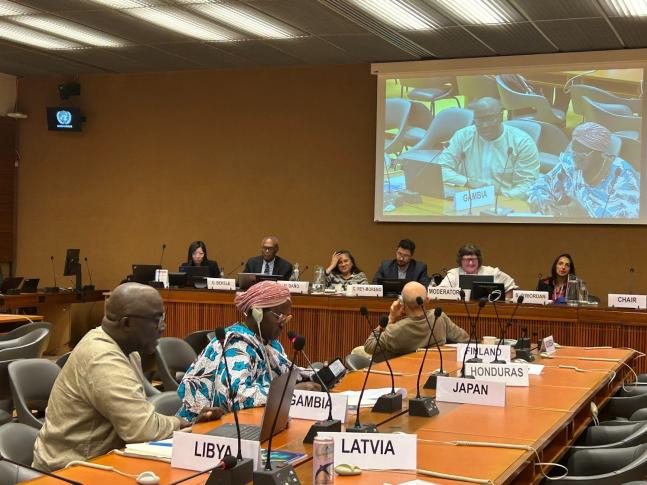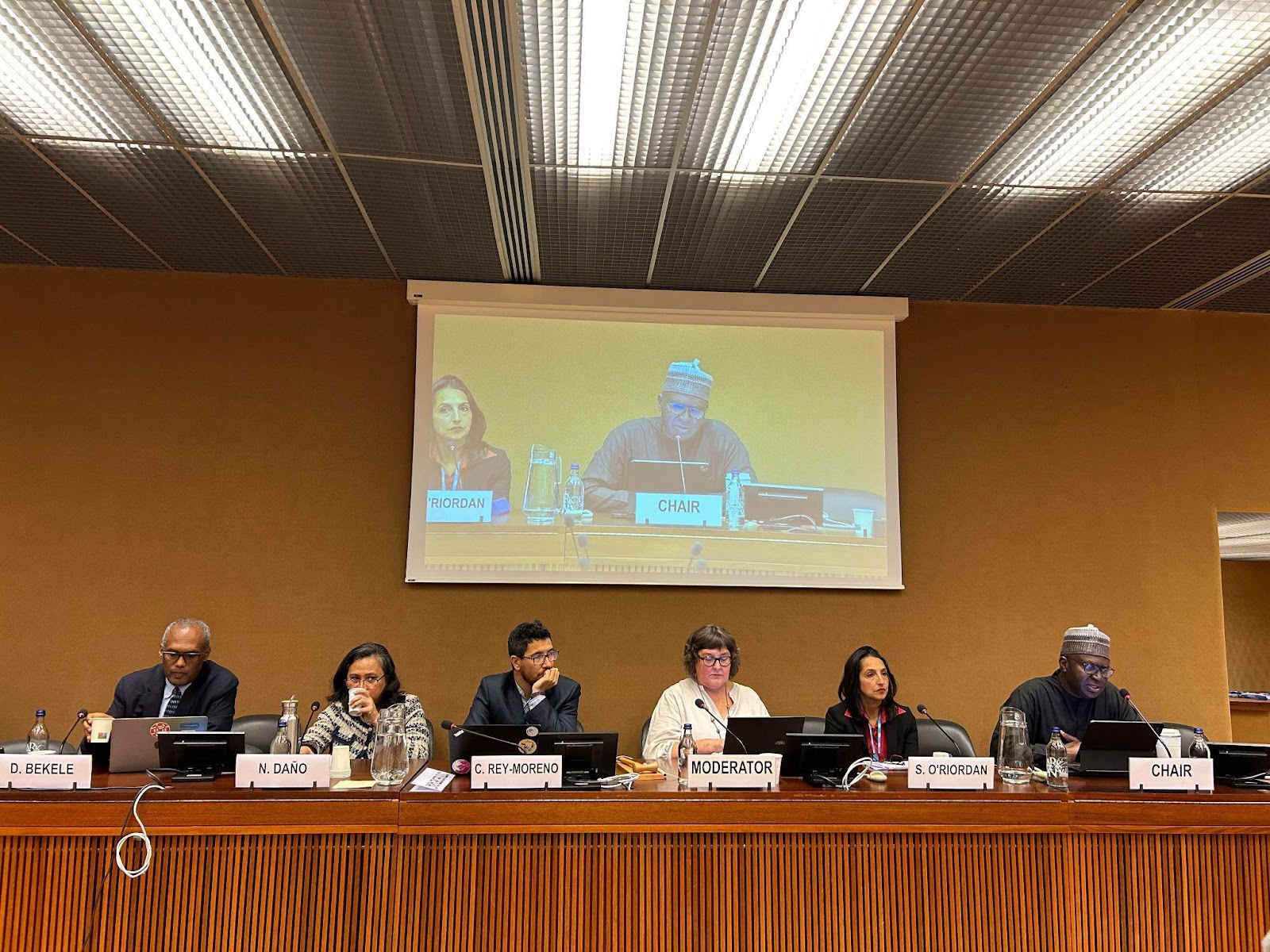
Despite the progress made in connectivity initiatives for the digital inclusion of communities and public and private policies aimed at guaranteeing the right to access to information and communication technologies (ICTs), one third of the world’s population remains unconnected or underserved, mainly in remote, rural and marginalised areas. For the groups and communities that live in these areas, community-centred connectivity initiatives offer a path towards digital inclusion.
In its two founding editions of, The World Summit on the Information Society (WSIS), held in two phases in 2003 in Geneva and 2005 in Tunis, recognised the need for financing mechanisms to ensure “a people-centred, inclusive and development-oriented information society, where everyone can create, access, utilize and share information.” However, the role that community-centred connectivity initiatives could play to realise that goal, and how they could be financed to do so, has yet to be adequately considered.
With this in mind, the intersessional panel of the United Nations Commission on Science and Technology for Development (CSTD) proposed a side event, hosted by the Association for Progressive Communications (APC) and the Internet Society (ISOC), on “Exploring innovative financing mechanisms for community-centred connectivity: A WSIS+20 agenda to leave no one behind”. As an official event, the session was an in-person meeting, based on the UN's current policy, and took place on 22 October in the UN Palais des Nations in Geneva.
An opportunity for re-imagining the information society
It was the Tunis Agenda that stated the importance of “[h]elping to accelerate the development of domestic financial instruments, including by supporting […] networking initiatives based on local communities.” However, the financial resources and mechanisms developed so far have been insufficient to help such initiatives scale to the size of the problem.
“Community-centred connectivity initiatives are driven by completely different investment imperatives, bringing unique assets to the economic calculus of deployment, and have the added advantage of bringing many important social and economic benefits to the community,” as the call for this intersessional panel highlighted. The side event was proposed to give greater visibility to the innovative financing mechanisms created in recent years to support the potential of community-centred connectivity in bridging digital divides.
As 2025 will mark 20 years since the inception of WSIS, these conversations are necessary in the framework of the WSIS+20 review, as a watershed moment that provides an opportunity for the international community to re-imagine a future information society that is people-centric, inclusive and development-oriented.
Addressing alternatives for financing mechanisms together
The meeting convened by APC and ISOC brought together experts from governments for a wide range of member states, civil society, academia and research institutions that actively engaged in the proposals to explore and deepen on how innovative financing mechanisms for community-centred connectivity can be enabled in the frame of WSIS+20 agenda. There has been a history of global engagement of financial mechanisms within the WSIS space; however, the global recognition in recent years of community-centred connectivity initiatives makes for a better space to target appropriate funding for grassroots communities and continues and deepens this conversation. This is increasingly more important as the recently adopted Global Digital Compact, incorporates as one of its first commitments to invest in local network initiatives to close the digital divide.
This session was an important step on the road to address strategies for the sustainability of community networks, but also for sharing with UN CSTD members the evidence that has been gathered on the viability of community networks and other local access solutions for achieving meaningful connectivity in under- and unserved regions of the world.
The session was designed in the form of a series of questions, from basic definitions to programmatic strategies, that were addressed by panellists from institutions related to community-rooted experiences in various ways, representing different stakeholder groups. Some of these questions were:
- What are community-centred connectivity initiatives and how do they contribute to diversifying economies in a world of accelerated digitalisation?
- Are community-centred connectivity initiatives an innovative financing mechanism in themselves, and if so, what can government and financial institutions do to enable them?
- How can the UN’s work on Financing for Development help inform the WSIS+20 Agenda
Multistakeholder voices for answering key questions
The panel was integrated by Ambassador Kah, the chair of the UN CSTD, Carlos Rey-Moreno from APC, Samantha O'Riordan from the International Telecommunication Union (ITU), Elenita "Neth" Daño from the Action Group on Erosion, Technology and Concentration (ETC Group), and Dawit Bekele from ISOC, with moderation provided by Anriette Esterhuysen, APC's senior advisor on global and regional internet governance.
In charge of the opening remarks, Ambassador Kah initiated the panel by highlighting how meaningful connectivity is a pre-condition for the digital inclusion needed to meet the WSIS goals. He was followed by Dawit Bekele, who discussed how complementary solutions are needed to close the digital divide, highlighting that the growth at which internet penetration is increasing is plateauing. Carlos Rey-Moreno continued the conversation discussing how community-centred connectivity initiatives contribute to meeting these WSIS goals, focusing particularly on what financial mechanisms are necessary to enable them.

In his presentation, Carlos Rey-Moreno offered useful definitions of community networks and community-centred connectivity initiatives definitions, framed as complementary access solutions to address the bridging of the digital divide. He explained what community connectivity providers are and how to distinguish them from traditional operators. “Community connectivity providers come in a variety of different sizes, setups, purposes, governance models and levels of professionalism. And they are often complementary – filling gaps and providing access where traditional commercial networks do not,” he said. To illustrate this scenario, he used the “jar of stones” metaphor: even if the jar is full of big stones, there are spaces that remain empty and can be filled by small stones, just as small operators can fill the gaps left uncovered by large operators. In this sense, he highlighted the need for recognition, licensing and financing mechanisms, and also the importance of building capacities for accessing these financial mechanisms for community-centred connectivity initiatives.
Samantha O'Riordan from the ITU addressed universal service funds (USFs) as a financial mechanism that has been proposed and applied in several countries to enable community-centred connectivity initiatives, unpacking how they are featured in the recently published ITU Universal Service Financing Efficiency Toolkit. Finally, Elenita "Neth" Daño from the ETC Group shared her vision after being actively engaged in the Financing for Development (FfD) Conference, which would be the following milestone in this conversation. She also participated as part of the UN Technology Facilitation Mechanism resulting from FfD3 for the area of Science, Technology and Innovation, reflecting on how these discussions around solutions for meaningful connectivity in the context of WSIS are contributing to the upcoming FfD4 – and also vice versa, as the FfD process is influencing the upcoming WSIS review process.
As stressed in the report on innovative financing mechanisms to bridge the digital divide included in the recent special edition of Global Information Society Watch (GISWatch), WSIS+20: Reimagining horizons of dignity, equity: “The challenge today is to mainstream, accelerate and incentivise more innovative financing and investment models for new community-centred operators, and for expansion and upgrades for existing operators, while providing the enabling regulatory environment and training needed at each stage of development for their long-term sustainability.”
The discussion held in this intersessional panel will hopefully be considered by CSTD members in future conversations around closing the persistent digital divide, so that positive language about financing community-centred connectivity initiatives will be included in the future versions of the WSIS resolution. It is also hoped that this event will have contributed to raising awareness among member states, leading to the creation of enabling policy and regulation, including access to finance on favourable terms, for this type of complementary approaches.
Photos: Photo courtesy of UN Trade and Development (UNCTAD)